Versão portuguesa aqui.
GPS 38.662732452585836, -9.29887020575947
In the design and strategic planning of the defense of the Portuguese coast, in general, and the port of Lisbon, in particular, it emerged as a clear imperative in the mid-16th century that the maritime defense of Lisbon should advance to the mouth of the Tagus, in order to take advantage of the natural difficulties that its bar posed to navigation.
The sequence of French and Turkish piracy attacks, especially in 1552 and 1556, demonstrated the need to reinforce the defense of the coast, considering that the decision to “fortify” S. Julião da Barra took place in 1556, still in the reign of of D. João III and later retaken in 1559 on the initiative of D.ª Catarina.
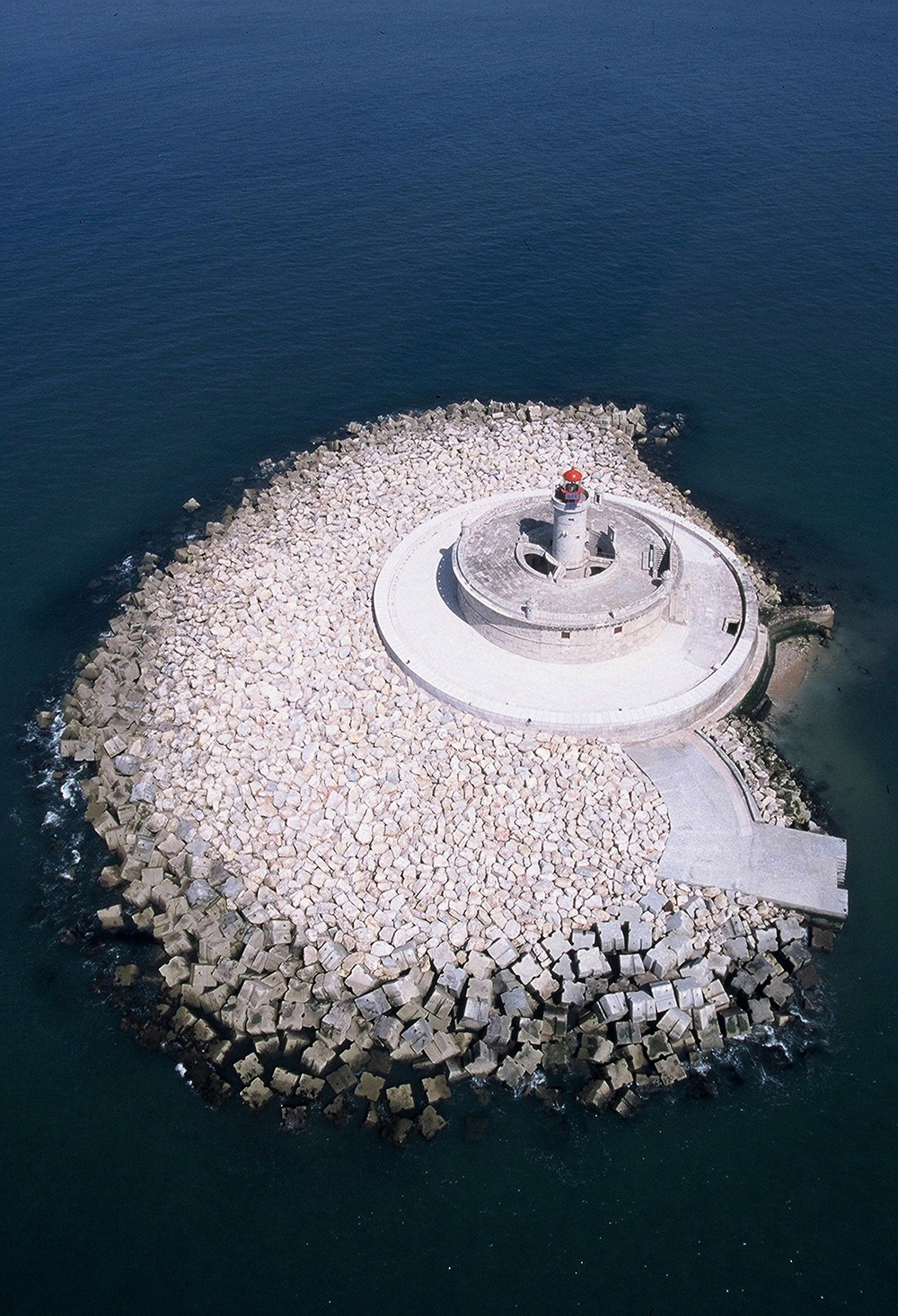
The construction of the fortress of S. Julião da Barra, confirmed the importance of the extensive beach that was in front of it, called Cabeça Seca, considering that the first projects for the construction of a fort in the shallows were designed by Francisco de Holland in 1571.
The consolidation of the intention, as well as the respective projects and tests for the construction of the Fort of S. Lourenço da Cabeça Seca, began around 1590, under the direction of the Servite friar João Vicenzo Casale, sent from Naples by Philip I.
He was followed in the design and direction of the works by Leonardo Turriano, also of Italian origin, who was the architect-general of the Kingdom, with the engineer António Simões as his assistant.
Incandescence by petroleum vapor replaced gas in 1946.
The Fort and Tower of S. Lourenço was classified as a property of public interest by Decree No. 41191, of July 18, 1957, recognizing its historical and cultural value.
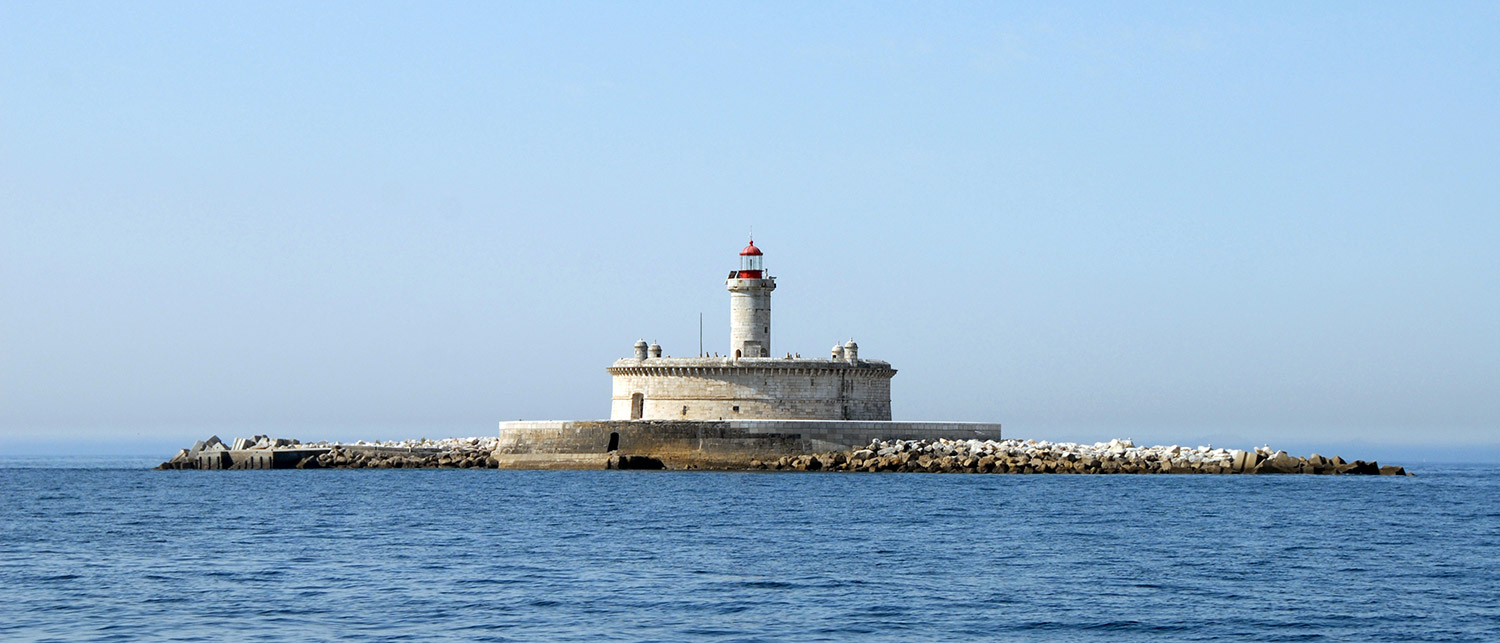
In 1959 the lighthouse was electrified, using the assembly of generator sets, starting to use a 500W/110V lamp and, in 1960, a new sound signal (nautophone) came into operation.
As part of the automation plan, in 1981 the optical apparatus was replaced by a rotating pedestal with sealed optics (PRB), and a tele-signaling system and a fog detector were also installed, with the lighthouse now being remotely controlled from from the Lighthouse Direction Center.
Following the automation of the lighthouse and the implementation of the telecontrol system, the Bugio Lighthouse was no longer manned by lighthouse staff in 1982.
In 1994, the lighthouse underwent a new remodeling, with the PRB 21 optic having been removed and a ML 300 optical lantern fitted, operating on solar energy.
In the winter of 1993, the violent action of the sea caused the collapse of a significant part of the lower platform of the fort, a situation that got worse in the following years and required urgent deep repair and restoration actions.
Finally, between 1997 and 2001, under the auspices of the Directorate-General for National Buildings and Monuments, restoration work was carried out, covering the rock-filling of the fort, the stonework and masonry and the walls, with the construction of a robust circular jetty and a new berth.
On July 16, 2008, the ML 300 flashlight was removed and replaced by a Vega VLB44 8 Dual Vm Strips, charge controller 2 – PROSTAR, and 4 solar panels BP380J, increasing the light range to 15 miles.
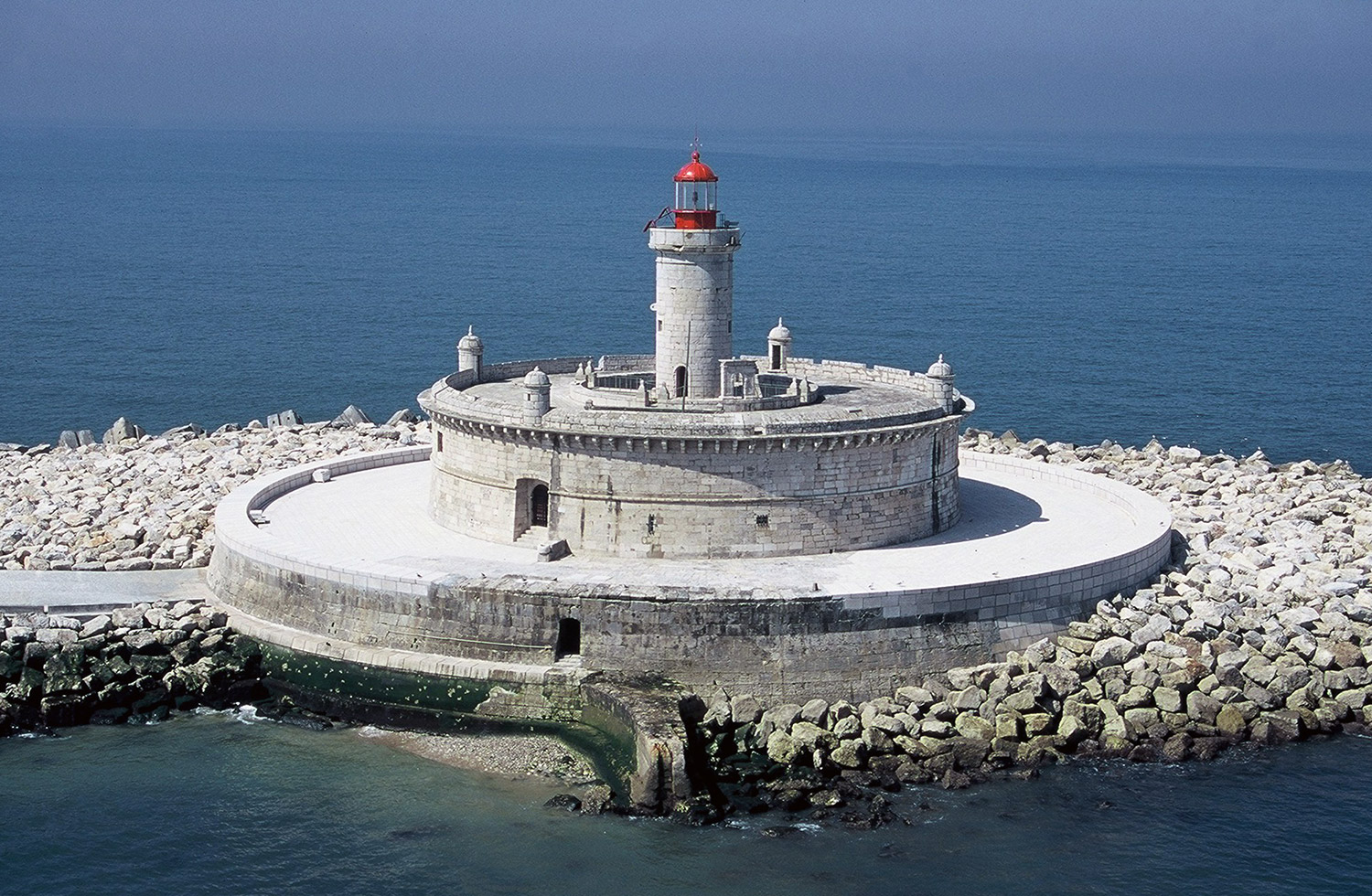
However, it was in 1643, by order of D. João IV, under the direct intervention of the Count of Cantanhede, that the construction of the Fort of S. Lourenço da Cabeça Seca or Bugio was definitively ordered.
Since construction of the Fort began in 1643, it is assumed that it was completed in 1657 or shortly thereafter.
In the little existing documentation on the activity of the Fort, the first record refers to 1658, referring that Captain Jorge Barros, governor of the fort, was warned by the War Council, to remain in his post because the “absence that he did could be of very serious damage to the royal service”.
The second record dates from 1661, refers to the establishment of the fort's service garrison as an autonomous command: forty soldiers, twelve artillerymen and a constable, who “left to guard half of each month”.
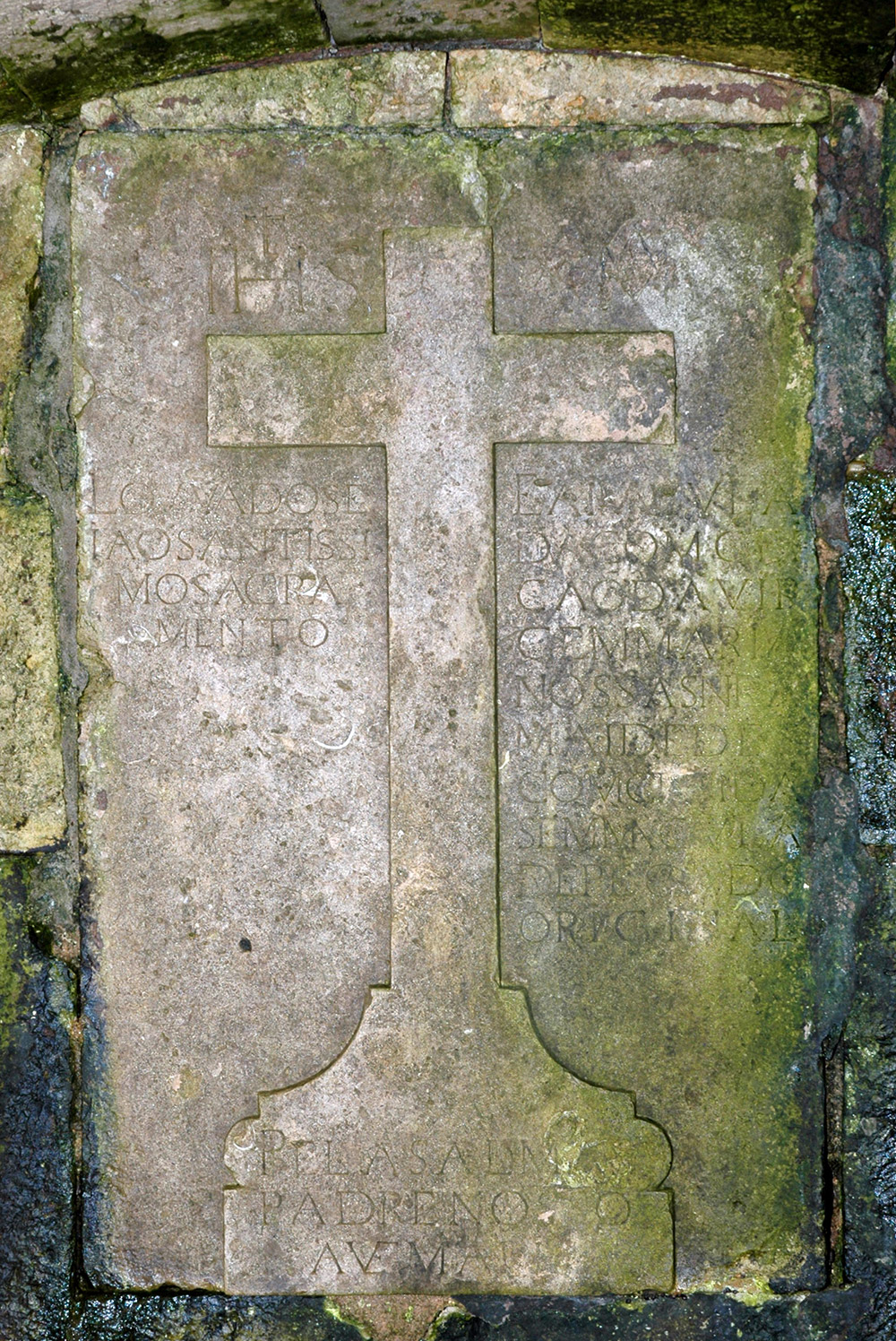
The third record, from 1680, refers again to the garrison of the fort, which is broken down as follows: a governor, a constable, a lieutenant and two sergeants, who made up the command, twelve gunners, three corporals, an atambo , and thirty soldiers. Added the logistical component: a storekeeper, a storeroom clerk, a barber and two chaplains.
As far as artillery was concerned, the fort had fourteen pieces of 24 caliber, twelve of 12 caliber and one of 6 caliber, all in bronze.
The constructive sobriety of the fort was only broken by the haughty presence of the Torre do Farol, which rose high above the built complex. This tower served as a lookout during the day and a lighthouse at night.
The structure of the lighthouse was made up of a circular stone lantern, with vertical openings, glazed, through which the fragile light produced by lamps fed with olive oil or animal fat filtered. The lantern was closed by a stony dome, of the beaker type, through which the smoke from the lamps drained.
In 1731, the first reports of the ruins of the original structure were reported.
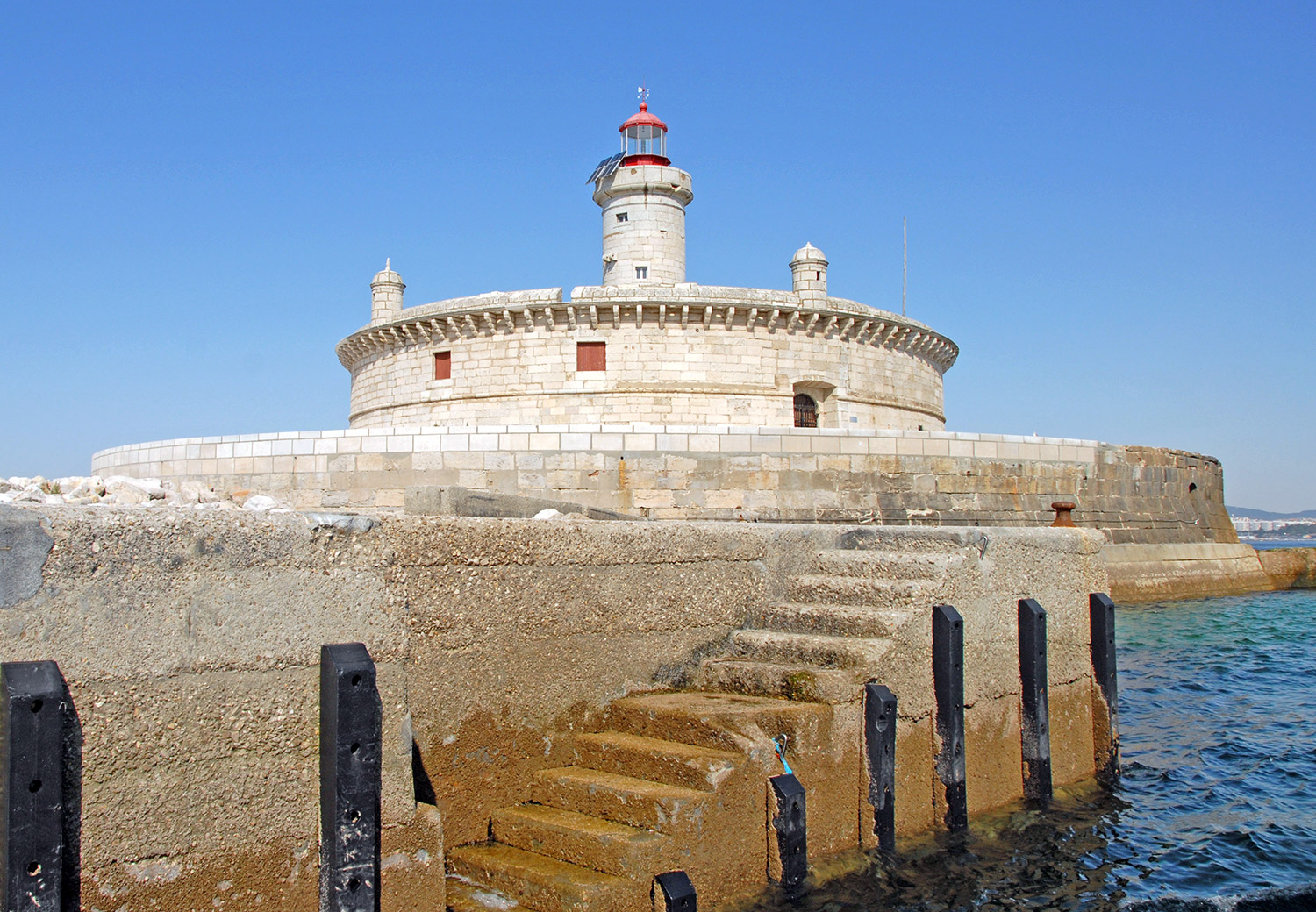
The 1755 earthquake caused great damage to the fort, leaving the tower practically destroyed. It was rebuilt and light was installed there again in 1775. It was one of the six lighthouses ordered to be built by the Pombaline charter with the force of law in 1758.
In 1789 the footing was recovered, by order of His Royal Highness, at which time the stone tower of the lighthouse was probably replaced by a metallic dome.
In 1812 there were complaints about the use of the lighthouse as an aid to navigation. The lighthouse underwent major repairs in 1829 and the device was replaced in 1836 by another, this one with a rotating system, produced by a clockwork mechanism.
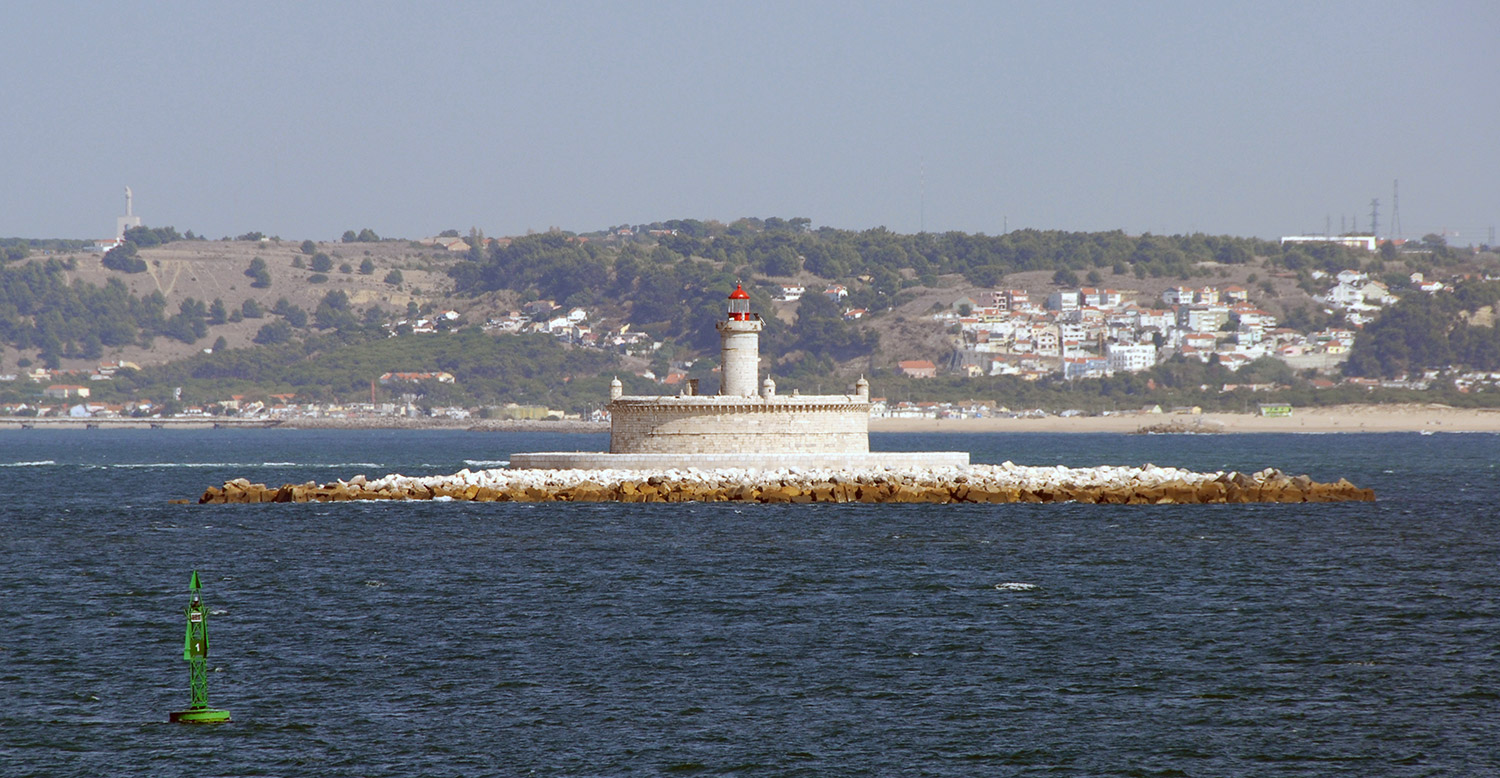
The lighthouse was manned by a lighthouse keeper, however, at the end of the 19th century, the military garrison was limited to six soldiers and a corporal, with three lighthouse keepers working at the lighthouse. The fort ceased to have a military garrison in the second decade of the 20th century.
It was only in 1890 that the planning of adaptation and repair works was recorded in four outbuildings, “regarded as dwellings for lighthouse keepers” on the upper floor, with the oil deposits on the ground floor. Subsequently, space was organized for the six lighthouse keepers, who resided in Bugio throughout the year, some of whom were accompanied by their respective families.
The isolation of the lighthouse keepers was broken once a month, when they went to land to buy supplies. However, between the end of the 19th century and the beginning of the 20th century, the banishment of lighthouse keepers was mitigated by the phenomenon of silting up of the cachopo south of the Tagus bar, reaching gigantic proportions and allowing, during low tide, pedestrian communication with the beach da Trafaria, there are reports of pilgrimages from the riverside villages between Cacilhas and Trafaria, to the chapel of the fort, which was maintained by the wives of the lighthouse keepers.
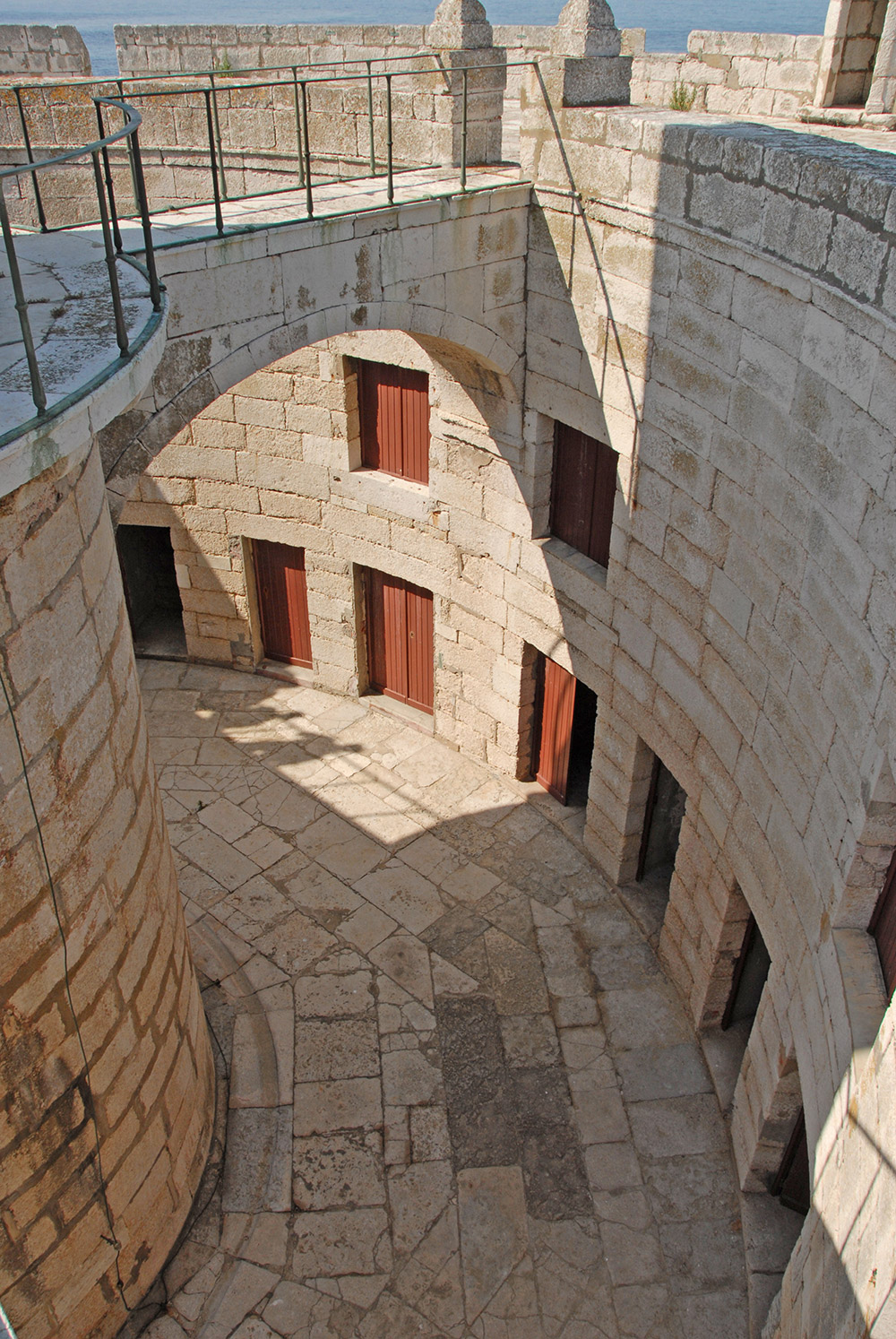
From the 1960s onwards, the staff of lighthouse keepers was expanded, with the shift system having been introduced, with two teams of three elements forming for this purpose, alternating every four days, whenever the weather conditions and sea allowed it.
In 1891 the light from the lighthouse was white and rotating, with eclipses every 3 minutes and, with flashes of 10 seconds duration, produced by an illuminating apparatus of sixteen lamps from Argand with parabolic reflectors and running on oil.
However, in 1896, the catoptric device was replaced by a 3rd order dioptric device, the light source being a 3-wick oil-powered lamp, producing a fixed white light, varied by red flashes.
The optical apparatus was replaced by another, this 3rd order catadioptric dioptric, large model, in 1923.
LATITUDE: 38º 39',70 N
LONGITUDE: 09º 17',85 W
HEIGHT: 14 M
ALTITUDE: 28 M
REACH: 15 MILES
FEATURE: Fl G 5s (Lt 1s;Ec 4s)